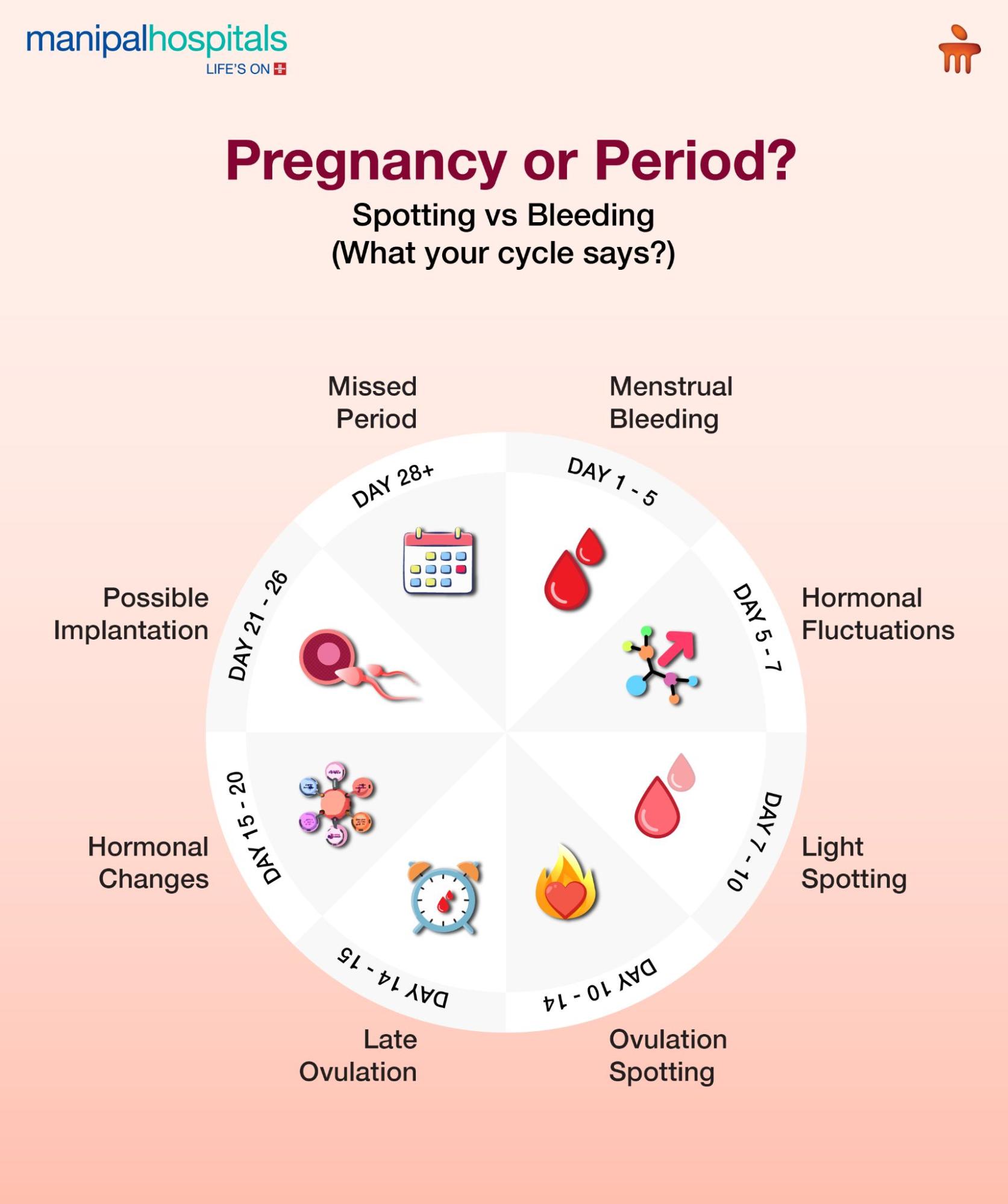
Light bleeding or spotting outside your normal period can be confusing. It’s something many women experience at some point—and often, it raises an important question: Is this a sign of early pregnancy or just a shift in my menstrual cycle?
Understanding the difference between implantation bleeding and period bleeding can help you make informed decisions about your health. Let’s explore what each type of bleeding means, when it typically happens, and how to identify when it might be time to take a pregnancy test or consult your doctor.
Synopsis
Understanding Implantation Bleeding
Implantation bleeding occurs when a fertilized egg attaches to the lining of the uterus. This process usually happens about 6 to 12 days after ovulation, around the time you’d expect your next period. As a result, many women mistake this light spotting for an early or irregular period.
Implantation bleeding is typically light pink or brown and lasts for a day or two. It’s not as heavy as a normal period and usually doesn't include clots. If you’re seeing spotting before pregnancy is confirmed, especially around your expected period date, this could be a sign of implantation.
How is Period Bleeding Different?
Menstrual bleeding, on the other hand, occurs when no fertilized egg implants, and the uterine lining sheds. This results in a heavier flow, darker red blood, and can last anywhere from 4 to 7 days.
You may also notice cramping, fatigue, and mood changes during your period. While these symptoms can also appear early in pregnancy, the bleeding pattern tends to be a clear indicator. If you’re asking yourself, does spotting occur before period or could this be something else, it helps to consider the timing, color, and flow.
Key Differences Between Period and Implantation Bleeding
-
Timing: Implantation bleeding typically occurs a few days before your expected period. If you notice bleeding before your period date or spotting two weeks before your period, it may be due to hormonal shifts or early pregnancy.
-
Colour & Consistency: Implantation bleeding is usually light pink or brown, while period blood tends to be bright to dark red. If you notice red discharge after your period, consider whether it’s lighter than usual or accompanied by other symptoms.
-
Duration: Implantation bleeding often lasts just a day or two. Periods, however, have a more consistent flow and timeline.
Spotting or Bleeding After Your Period—What Does It Mean?

It’s also common for some women to experience spotting or bleeding after their period ends. While this may be harmless, such as ovulation bleeding or residual menstrual flow, it’s worth tracking, especially if the pattern is new or recurring.
You might also experience bleeding 7 days after period or even bleeding 15 days after period, depending on hormonal changes or ovulatory spotting. Light bleeding around ovulation (day 14 of a 28-day cycle) is fairly common and typically isn’t a cause for concern unless it becomes persistent.
In some cases, women report that their period started and then stopped—Am I pregnant is a question that arises due to confusion over implantation bleeding. If the bleeding is lighter than usual and stops quickly, pregnancy is a possibility, particularly if accompanied by other early signs like breast tenderness or nausea.
Should You Take a Pregnancy Test?
If you’ve experienced light spotting around the time your period is due, or unusual bleeding one week after your period, taking a pregnancy test is a good next step. Many early pregnancy symptoms overlap with PMS, but if your bleeding is different from your typical cycle, it’s worth confirming.
Remember, implantation bleeding usually occurs before a missed period. So if you’ve had unprotected sex recently and are seeing lighter-than-usual bleeding or spotting, don’t ignore it.
When to Talk to a Doctor
Mild, irregular spotting is common and often harmless. But it’s a good idea to consult a healthcare provider if:
Bleeding is heavier or longer than usual
-
You notice pain, foul-smelling discharge, or clotting
-
Spotting occurs frequently between periods
-
You’re unsure whether you’re pregnant
Consistent mid-cycle bleeding on the 14th day after period, or why am I bleeding after my period ended, are questions that warrant medical guidance if the pattern continues.
Your body is always communicating with you, even through something as subtle as spotting. Whether it's bleeding before pregnancy or bleeding 15 days after your period, tracking your symptoms can provide important insights. If something feels unusual, don’t hesitate to seek medical advice.
FAQ's
Implantation bleeding is usually light, short in duration, and may appear pink or brown in color. A menstrual period typically involves heavier bleeding that lasts several days and is bright or dark red.
Yes. Light bleeding or spotting before pregnancy can occur in early pregnancy, often due to implantation of the fertilized egg into the uterine lining.
Red discharge after period or bleeding 7 days after period may be caused by hormonal fluctuations, ovulation, or residual menstrual blood being expelled.
Bleeding 15 days after period could be due to late ovulation, hormonal imbalances, or in some cases, early pregnancy. If it persists, medical evaluation is recommended.
No. While spotting before pregnancy can be a sign of implantation, spotting can also occur due to ovulation, hormonal changes, or other benign reasons.
A period started then stopped may indicate implantation bleeding, stress-induced cycle changes, or hormonal irregularities. Further observation or testing may be required.
Frequent or heavy bleeding before period date or between cycles may indicate underlying issues and should be evaluated by a healthcare provider.
Yes. Spotting two weeks before period is often associated with ovulation and is generally considered normal if not accompanied by other symptoms.






















 5 Min Read
5 Min Read














